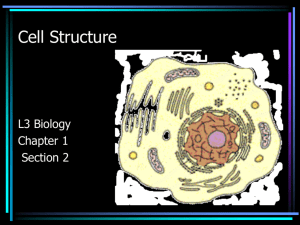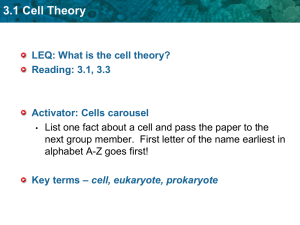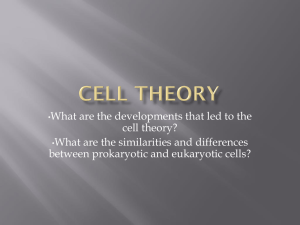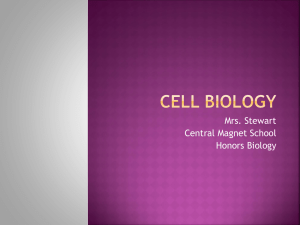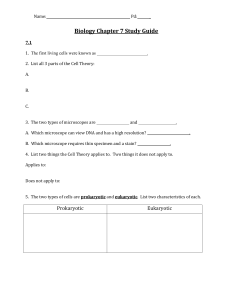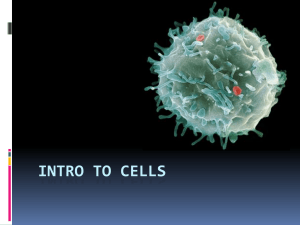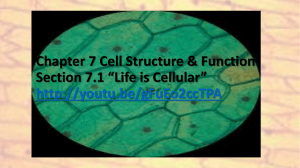Section 1: Life is Cellular
advertisement
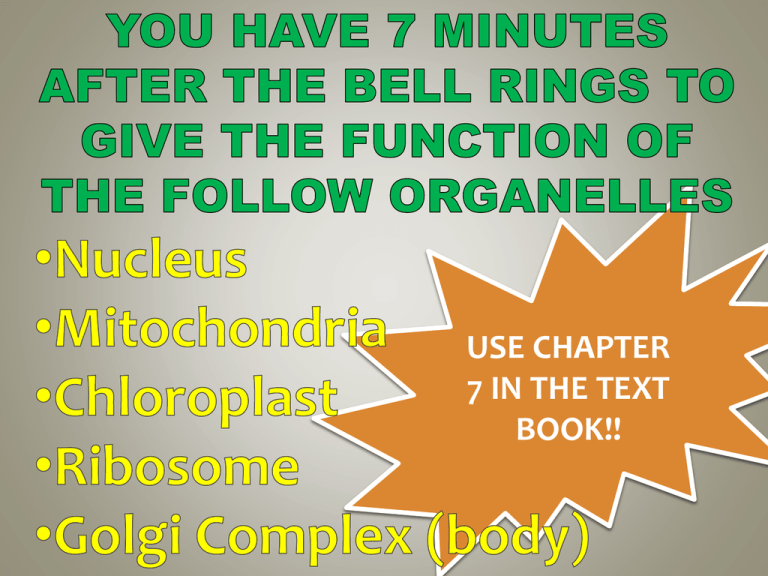
USE CHAPTER 7 IN THE TEXT BOOK!! LIFE IS CELLULAR • Used a compound microscope to look at cork • Called the chambers • Concludes that all plants are made of that he saw “Cells” cells Robert Hooke Matthias Schleiden Anton van Leeuwenhoek • Used a single lens microscope to observe pond water • Found tiny living things he called animalcules Theodor Schwann • Concludes that all animals are made up of cells The Cell Theory States: 1. All living things are made up of one or more cells 2. Cells are the basic units of structure and organization in all living things • Used a compound microscope to look at cork • Called the chambers • Concludes that all plants are made of that he saw “Cells” cells Robert Hooke Matthias Schleiden Anton van Leeuwenhoek • Used a single lens microscope to observe pond water • Found tiny living things he called animalcules • Proposes that all cells come from existing cells Rudolph Virchow Theodor Schwann • Concludes that all animals are made up of cells The Cell Theory States: 1. All living things are made up of cells 2. Cells are the basic units of structure and organization in all living things 3. New cells are produced from existing cells • Compound Light Microscope • Series of Lenses • Maximum magnification 1,000X • TEMs ( transmission electron microscope) • Allow for a much closer look • 500,000X • SEMs ( scanning electron microscopes) • Does not require samples to be cut • Produce 3-D images Prokaryotes Eukaryotes Prokaryotic Cells Single Celled Bacteria Small, Simple, cells that have genetic material (DNA) that is not contained in a nucleus (no nucleus) • No membrane bound organelles • Have a Cell Membrane and a Cell Wall •Have Ribosomes Eukaryotic Cells Single or Multi Celled Plants and Animals •Large and complex, Specialized cells that have a plasma membrane. •DNA is located in a nucleus. •Have Ribosomes. They have Membrane Bound Organelles “Little Organs” that compartments that have specific functions PROKARYOTE/EUKARYOTE VENDIAGRAM Fold a blank sheet of paper in half Prokaryotes Both Eukaryotes Create a sketch of a typical prokaryotic cell and Eukaryotic cell on the appropriate flap. Procedure Place the words below in correct part of your vendiagram Simple Single or multi celled Only Single Cell Complex Large Small Plants Have ribosome Plasma Membrane Specialized Bacteria Nucleus Living Animals DNA Membrane Bound Organelles Prokaryotic Eukaryotic Specialized Only Single Cell Complex Living Single or multi celled DNA Membrane Bound Organelles Simple Plasma Membrane Bacteria Small Have ribosome Protist Fungi Large Plants Nucleus Animals How would you determine whether the cells of a newly discovered organism were prokaryotic or eukaryotic? *Answer in complete sentences on the back of your vendiagram*
